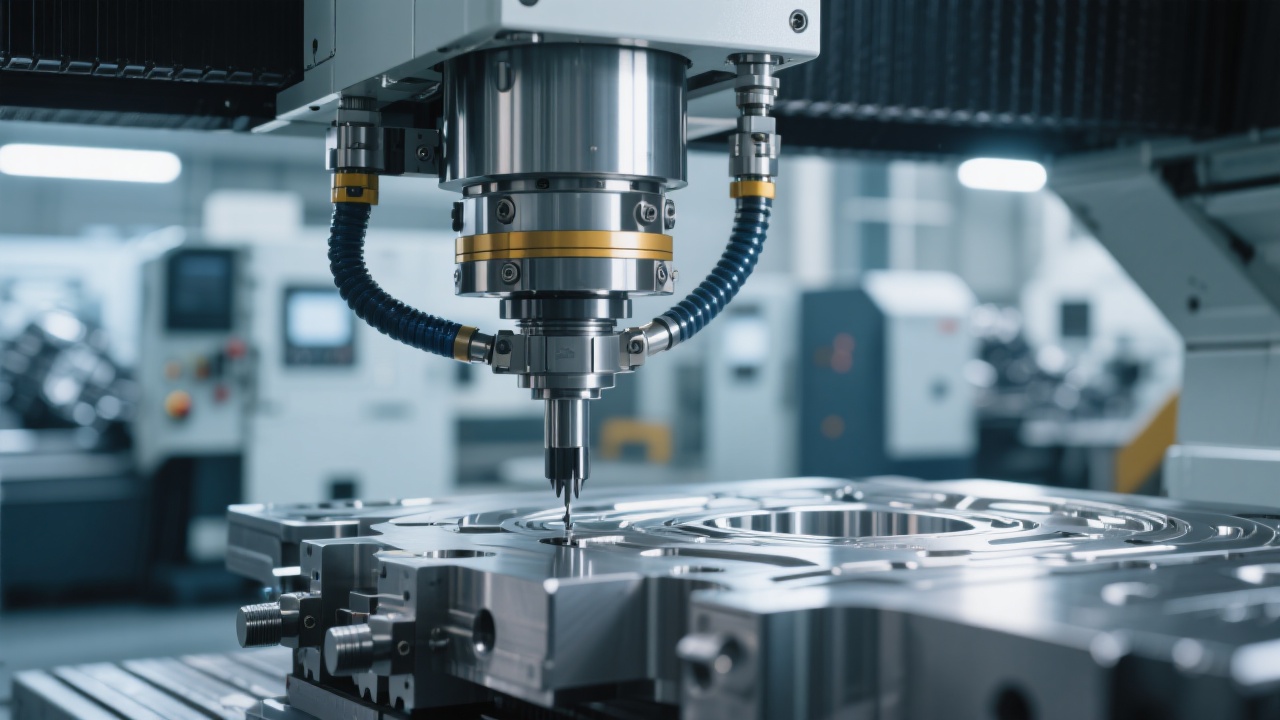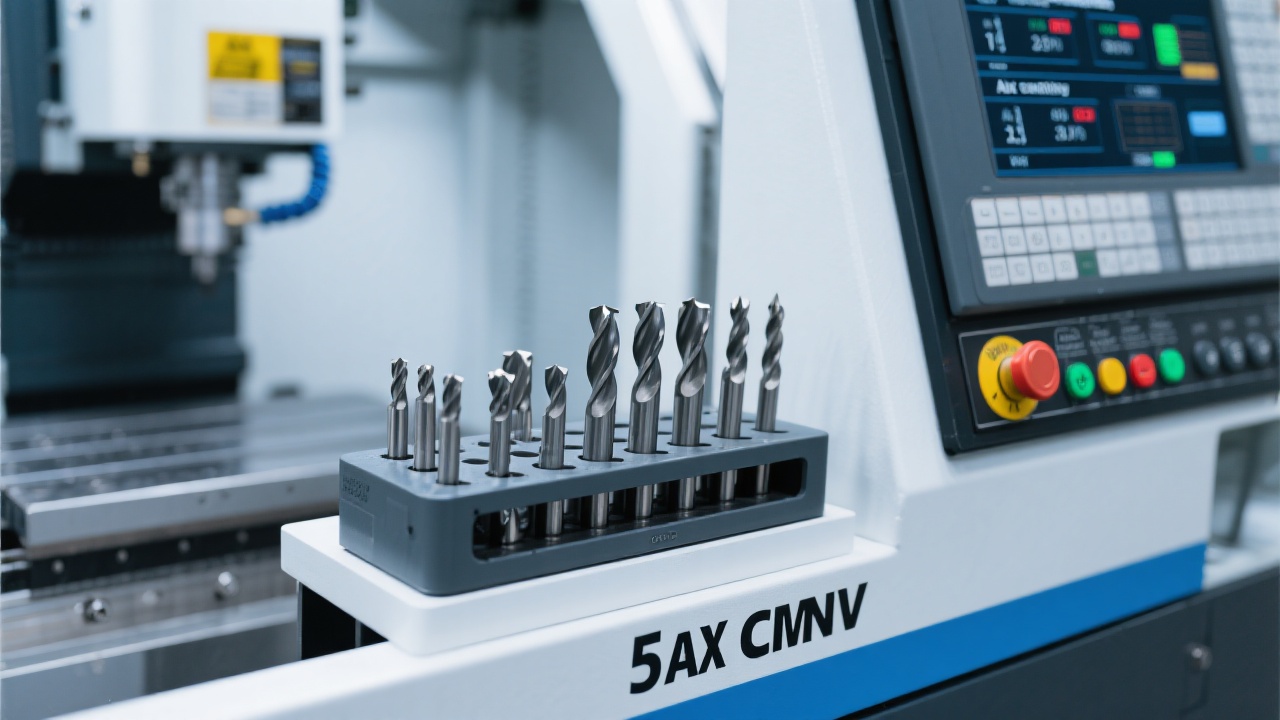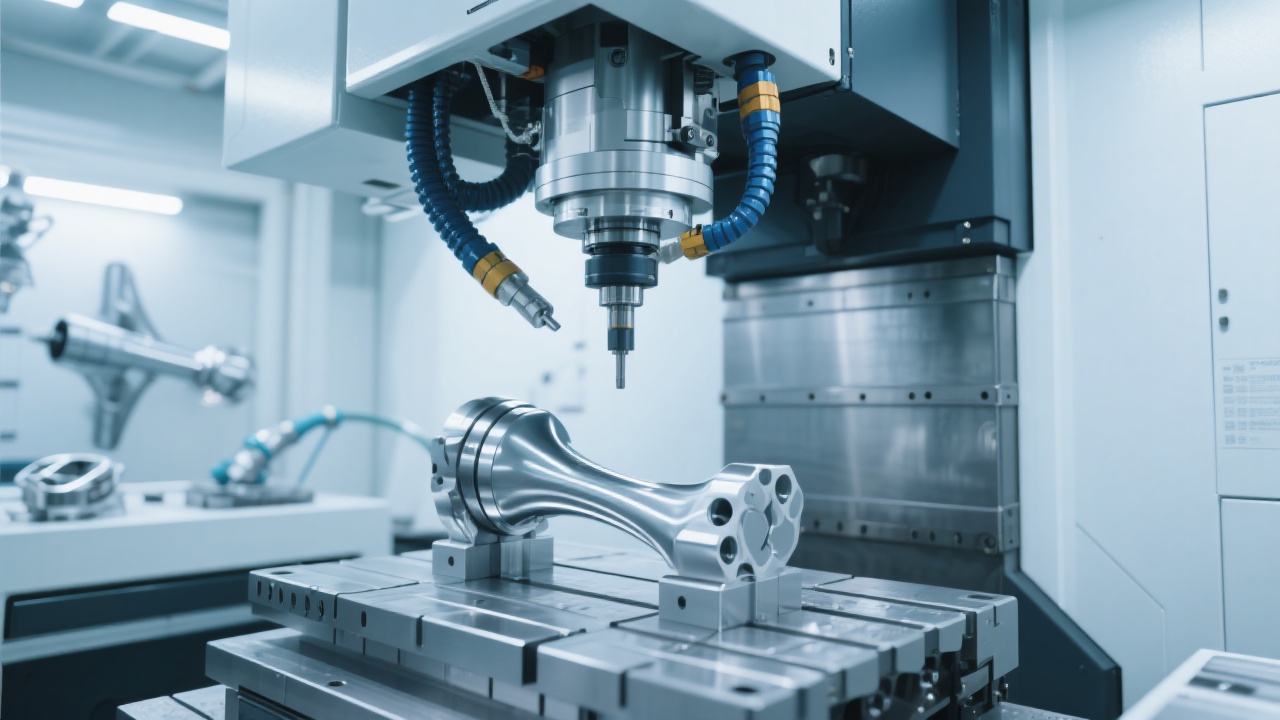
In the field of machining, the FH855L RTCP five - axis vertical machining center launched by Ningbo Kaibo CNC Machinery Co., Ltd. has emerged as a game - changer for processing multi - faced complex parts made of graphite materials. This article aims to provide a comprehensive guide on how to optimize the machining parameters of graphite materials using this advanced equipment.
Let's start by understanding the RTCP technology. RTCP, or Rotation Tool Center Point control technology, is a key feature of this five - axis machining center. Unlike traditional three - axis machining centers, the five - axis version with RTCP can significantly improve machining accuracy and efficiency. For instance, in a three - axis machining center, the tool path is relatively simple, and it often requires multiple setups and workpiece flips to complete multi - face machining. In contrast, the five - axis machining center with RTCP can reduce the number of workpiece flips by up to 70%, which not only saves time but also minimizes human errors.

Graphite is a unique material with specific characteristics that affect machining parameters. Its low density and high thermal conductivity mean that it can withstand high - speed machining. However, its brittleness requires careful consideration of the feed rate, cutting depth, and spindle speed.
When it comes to the feed rate, for graphite materials, a typical range can be between 1000 - 3000 mm/min. A lower feed rate may be used for roughing operations, while a higher rate can be applied during finishing. The cutting depth should generally be kept between 0.1 - 0.5 mm to avoid excessive stress on the tool and prevent graphite breakage. As for the spindle speed, it can range from 8000 - 12000 rpm, depending on the tool diameter and the complexity of the part.
Let's take the example of graphite electrode machining. By using the RTCP function of the FH855L, a company was able to reduce the machining time by 40%. They optimized the feed rate to 2000 mm/min, the cutting depth to 0.2 mm, and the spindle speed to 10000 rpm. This resulted in a significant improvement in the surface finish of the electrodes, with a reduction in surface roughness from Ra 3.2 to Ra 1.6.

For senior engineers, the focus is on multi - face linkage path planning and tool path avoidance strategies. Multi - face linkage path planning allows for seamless machining of complex parts without the need for frequent tool changes. By carefully planning the tool path, engineers can improve the overall machining efficiency by up to 30%.
Tool path avoidance strategies are also crucial. When machining graphite materials, the tool may encounter obstacles or sharp corners. By using advanced software and the RTCP function, the tool can automatically adjust its path to avoid these issues, ensuring a smooth and accurate machining process.
In the process of graphite machining, there are some common mistakes. One of them is using incorrect tool geometry. For graphite materials, a tool with a sharp edge and proper rake angle is essential. Another mistake is neglecting the importance of coolant. Although graphite can withstand high - speed machining, using a proper coolant can extend the tool life by up to 50%.

The FH855L RTCP five - axis vertical machining center offers a comprehensive solution for graphite material machining. Whether you are a novice or a senior engineer, this equipment can help you optimize your machining parameters, improve efficiency, and enhance the quality of your products. With its advanced RTCP technology and excellent customer service, Ningbo Kaibo CNC Machinery Co., Ltd. is committed to providing the best support for your machining needs.
Discover More About the FH855L RTCP Five - Axis Vertical Machining Center

